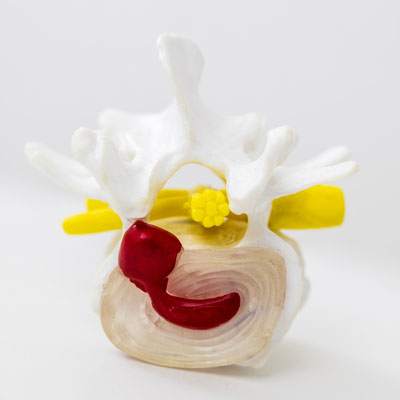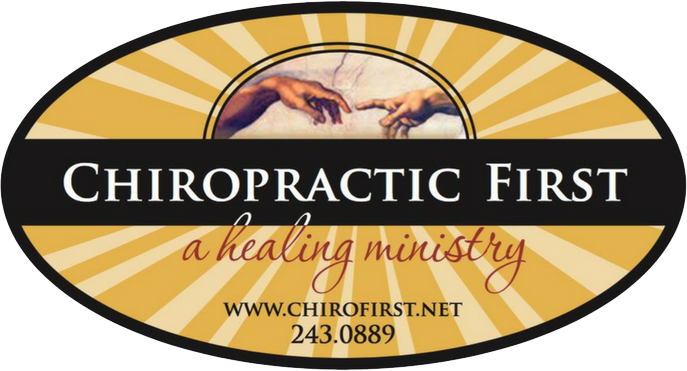How to Heal a Bulging Disc Naturally?
If you’re dealing with the persistent ache of back pain and wondering how to heal a bulging disc naturally, you’re not alone. While bulging discs can feel overwhelming, many patients find significant relief through natural approaches that address the root cause rather than just masking symptoms. Today, we’ll explore proven natural methods that can help your disc heal, reduce pain, and restore your quality of life.
What Is a Bulging Disc?
Think of your spinal discs as nature’s shock absorbers – small, cushion-like structures that sit between each vertebra in your spine. These discs have a tough outer layer (annulus fibrosus) and a gel-like center (nucleus pulposus) that helps your spine move smoothly and absorb impact.
A bulging disc occurs when the outer layer weakens or stretches, causing the disc to extend beyond its normal boundaries. Imagine a jelly donut that’s been squeezed – the filling starts to push against the outer shell, but it hasn’t broken through completely.
This bulging can put pressure on nearby nerves, leading to pain, numbness, or tingling that may travel down your arms or legs depending on where the bulge occurs.
Bulging Disc vs. Herniated Disc: Key Differences
A bulging disc involves the outer layer stretching but remaining intact, while a herniated disc means the outer layer has actually torn, allowing the inner material to leak out.
Bulging discs typically cause more generalized discomfort and have a better prognosis for natural healing. Herniated discs often produce more severe, specific symptoms and may require more intensive treatment.
Understanding this difference helps us tailor the most effective natural treatment for bulging disc conditions.
Symptoms of a Bulging Disc
- Localized back pain that may worsen with certain movements, especially bending forward or sitting for extended periods. This pain often feels like a deep ache or stiffness in the affected area.
- Radiating pain is another telltale sign. If the bulging disc presses on nerve roots, you might experience shooting pain that travels down your buttocks, thigh, or even into your foot – a condition commonly called sciatica.
- Numbness and tingling in your legs, feet, or toes can indicate nerve involvement. Some patients describe this as a “pins and needles” sensation or areas that feel “asleep”.
Common Causes of a Bulging Disc
Natural aging is the most common culprit. As we age, our discs naturally lose water content and become less flexible, making them more susceptible to bulging.
Poor posture and spinal misalignment place uneven pressure on your discs over time. Hours spent hunched over computers, looking down at phones, or slouching on couches create chronic stress that weakens disc structure.
Acute injuries from lifting heavy objects with poor form, car accidents, or sports activities can cause sudden disc damage.
Sedentary lifestyle contributes significantly to disc problems. When we don’t move regularly, the muscles supporting our spine weaken, placing additional stress on the discs themselves.
Can a Bulging Disc Heal Naturally Without Surgery?
Here’s the encouraging truth: yes, bulging discs can heal naturally without surgery in many cases. Your body possesses remarkable regenerative abilities when given proper support and conditions.
According to a landmark study by Boden et al. (1990) published in The Journal of Bone and Joint Surgery, many disc abnormalities found on MRI scans cause no symptoms at all. This suggests that the body often adapts and heals around disc problems naturally.
Factors that influence healing include your age (younger patients typically heal faster), overall health, activity level, and how quickly you address the problem. Patients who maintain movement while respecting their pain often recover more successfully than those who become completely sedentary.
The typical recovery timeline varies considerably. Acute cases may see significant improvement within 4-6 weeks, while chronic conditions might require 3-6 months of consistent natural care.
Natural Ways to Heal a Bulging Disc
Lifestyle & Self-Care Approaches
- Exercise and stretching form the cornerstone of natural disc healing. Start with gentle movements like walking, which promotes circulation and nutrient flow to your discs without excessive stress. Swimming provides excellent low-impact exercise that can maintain fitness while your disc heals.
- Safe yoga-based movements can be particularly beneficial:
- Cat-Cow pose: Gently mobilizes the entire spine
- Knee-to-chest stretches: Reduces pressure on affected discs
- Cobra pose: Strengthens back muscles while promoting extension
Always listen to your body and stop any movement that increases pain.
- Proper posture and ergonomics are crucial for healing. When sitting, keep your feet flat on the floor with your knees slightly below hip level. For lifting, always bend at your knees, not your waist, and keep objects close to your body.
- Stress management plays a vital role in healing. Chronic stress increases inflammation and muscle tension, both of which can impede recovery. Simple techniques like deep breathing, meditation or gentle stretching can make a significant difference.
Nutrition and Hydration for Disc Health
- Anti-inflammatory foods support your body’s natural healing processes. Focus on:
- Fatty fish like salmon and mackerel (rich in omega-3s)
- Colorful vegetables and fruits (high in antioxidants)
- Nuts and seeds (provide healthy fats and vitamin E)
- Turmeric and ginger (natural anti-inflammatory compounds)
Meanwhile, limit processed foods, excess sugar, and trans fats that can promote inflammation.
- Hydration is particularly important for disc health. Since discs are largely composed of water, staying well-hydrated helps maintain their structure and function. Aim for at least 8 glasses of water daily, more if you’re active or live in a dry climate.
- Weight management reduces mechanical stress on your spine. Every extra pound adds approximately 4 pounds of pressure to your lower back.
Sleep Position Adjustments
- Best sleeping positions for disc healing include:
- Side-lying with a pillow between your knees to maintain spinal alignment
- Back-lying with pillows under your knees to reduce lumbar stress
- Avoid stomach sleeping, which forces your neck into an awkward position and can increase lower back strain.
Your mattress should provide adequate support – not too soft that you sink in, but not so firm that it doesn’t contour to your body’s natural curves.
Do’s and Don’ts for Bulging Disc Recovery
DO:
- Stay active with gentle, pain-free movements
- Apply ice for acute pain (first 48-72 hours)
- Use heat for chronic stiffness and muscle tension
- Practice good posture consistently
- Stay hydrated and eat anti-inflammatory foods
DON’T:
- Remain completely sedentary for extended periods
- Ignore severe or worsening symptoms
- Lift heavy objects without proper form
- Sleep on your stomach
- Push through sharp, shooting pains
Professional Non-Surgical Treatments
Chiropractic Care for Bulging Disc
Chiropractic adjustments for bulging disc conditions focus on restoring proper spinal alignment and reducing nerve pressure. Gentle, specific adjustments can help improve joint mobility and reduce inflammation around affected areas.
At our clinic, we’ve seen remarkable results with patients who combine chiropractic care with the lifestyle modifications we’ve discussed. The key is working with a chiropractor experienced in treating disc conditions who understands when to be gentle and when more intensive treatment might be appropriate.
Chiropractic BioPhysics® (CBP®) Treatment for Bulging Disc
Chiropractic BioPhysics® represents a significant advancement in spinal care. Unlike traditional chiropractic approaches that focus primarily on immediate pain relief, CBP® treatment for bulging disc conditions addresses the underlying structural problems that contribute to disc damage.
CBP® uses precise measurements and mirror-image exercises to gradually correct spinal alignment. This approach recognizes that many disc problems result from long-term postural distortions that place uneven stress on spinal structures.
Benefits of CBP® for bulging discs include:
- Long-term structural correction rather than temporary symptom relief
- Reduced likelihood of future disc problems
- Improved overall spinal health and function
- Evidence-based approach with documented outcomes
Complementary Therapies
Physical therapy provides targeted exercises and manual techniques to improve strength, flexibility, and function. A skilled physical therapist can design a program specifically for your disc condition and recovery goals.
Massage therapy helps reduce muscle tension around the spine, improving circulation and reducing pain. However, ensure your massage therapist is experienced with disc conditions and uses appropriate pressure and techniques.
Acupuncture offers supportive care for pain management. While research results are mixed, many patients find it helpful as part of a comprehensive treatment plan.
See more: Can a Chiropractor Fix a Herniated Disc? (With Chiropractic BioPhysics®)
Conclude
Learning how to heal a bulging disc naturally empowers you to take control of your recovery. While the journey requires patience and commitment, countless patients have successfully avoided surgery and achieved lasting relief through natural approaches.
The combination of smart lifestyle choices, appropriate self-care, and professional guidance creates the optimal environment for your body’s natural healing abilities to work effectively.
Ready to start your natural healing journey? Contact Chiropractic First (Chiropractor in Redding, CA) today, Dr. Todd Royse and our team specialize in helping patients achieve lasting relief from bulging disc symptoms through safe, effective, natural approaches.
Schedule your consultation today and discover how Chiropractic BioPhysics® can help you heal your bulging disc naturally, without surgery or long-term medication dependence.
FAQs
Can a bulging disc heal naturally without surgery?
Absolutely. Research consistently shows that many bulging discs improve significantly with conservative, natural approaches. Surgery should typically be considered only after natural methods have been thoroughly explored.
What is the best natural treatment for a bulging disc?
The most effective approach typically combines several methods: appropriate exercise, posture correction, stress management, anti-inflammatory nutrition, and professional care like chiropractic treatment. CBP® offers particularly promising results for long-term structural correction.
Is chiropractic safe for bulging discs?
When performed by a qualified chiropractor experienced in disc conditions, chiropractic care is generally very safe. The key is proper diagnosis and appropriate technique selection based on your specific condition and symptoms.


